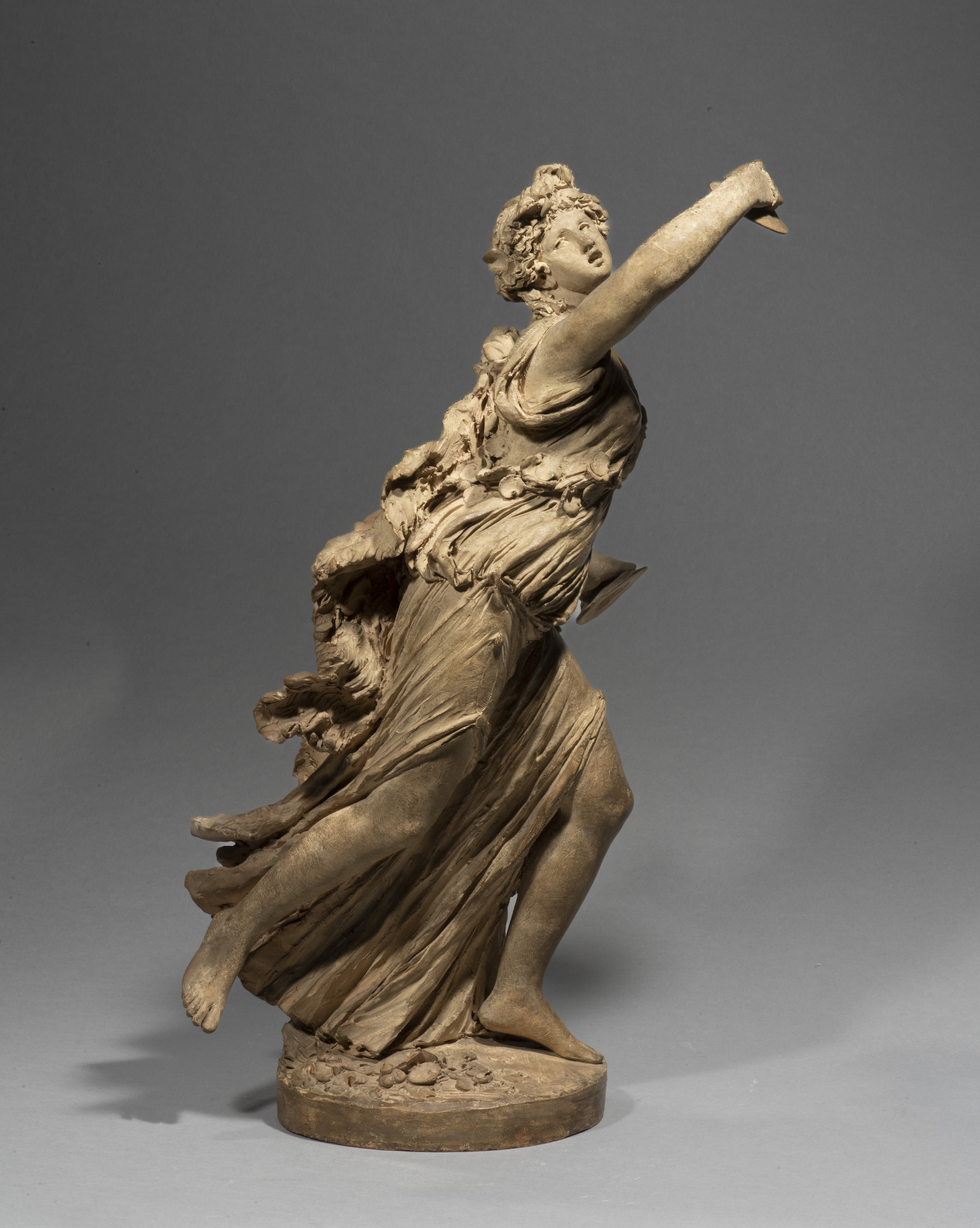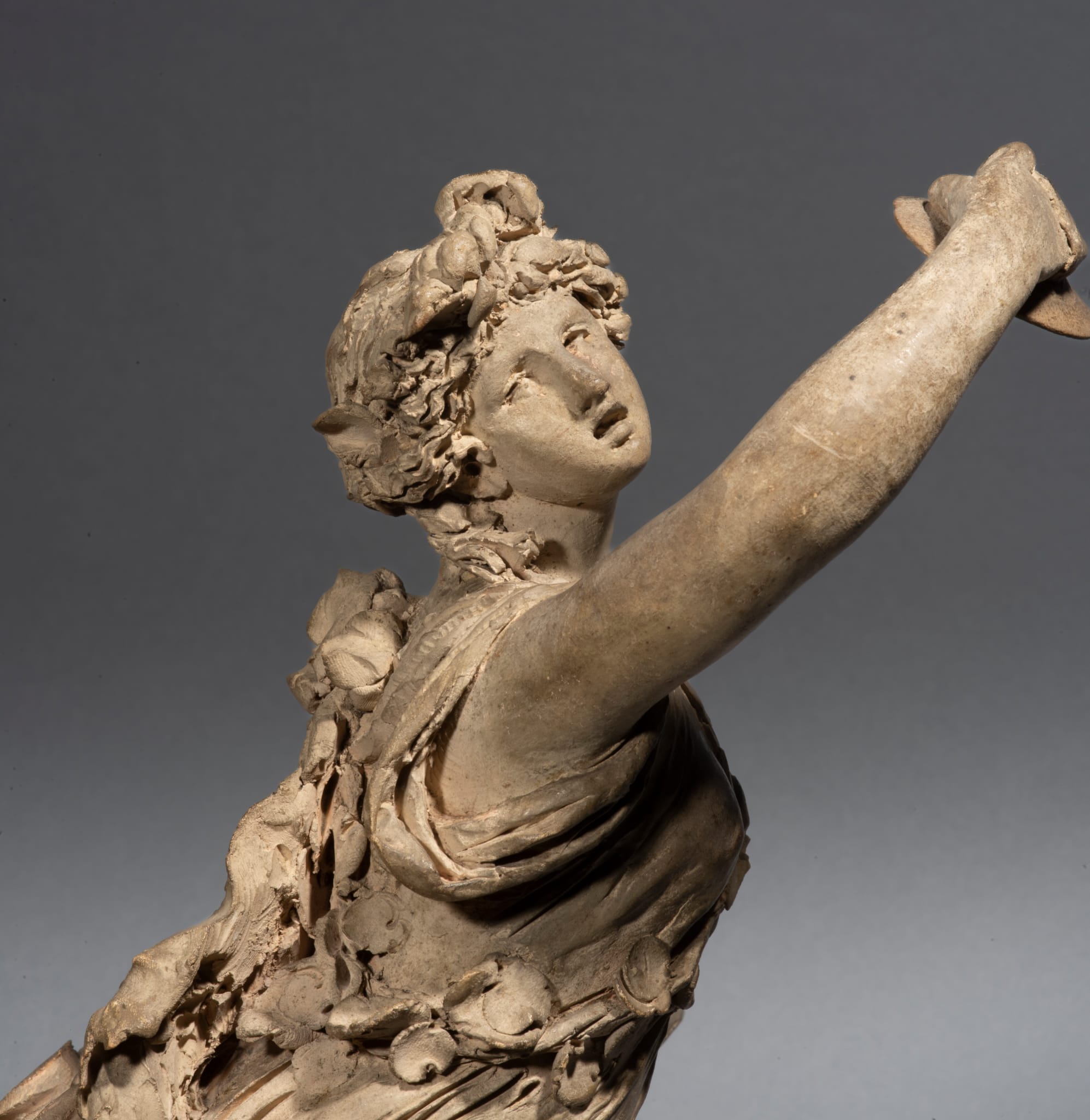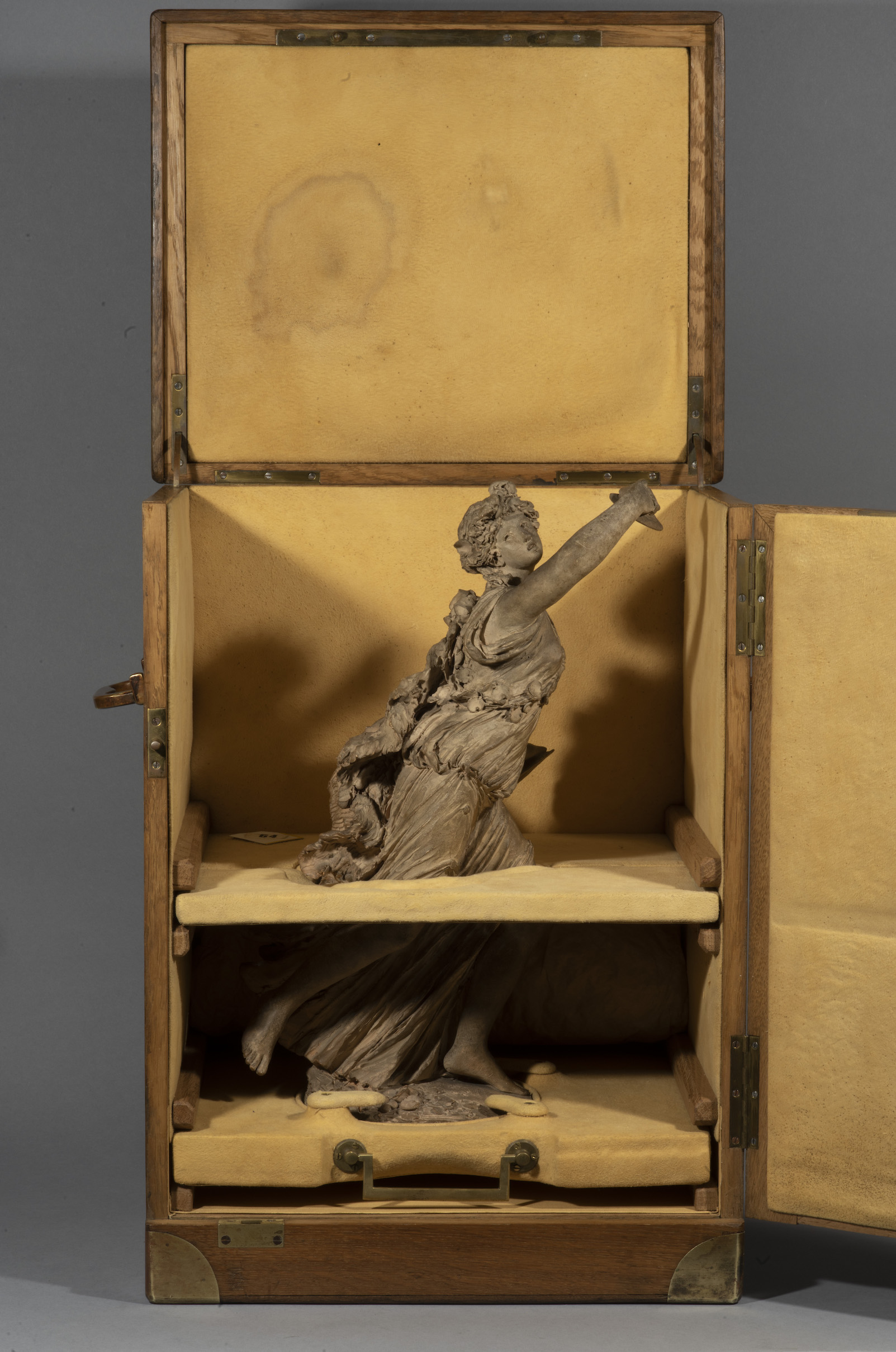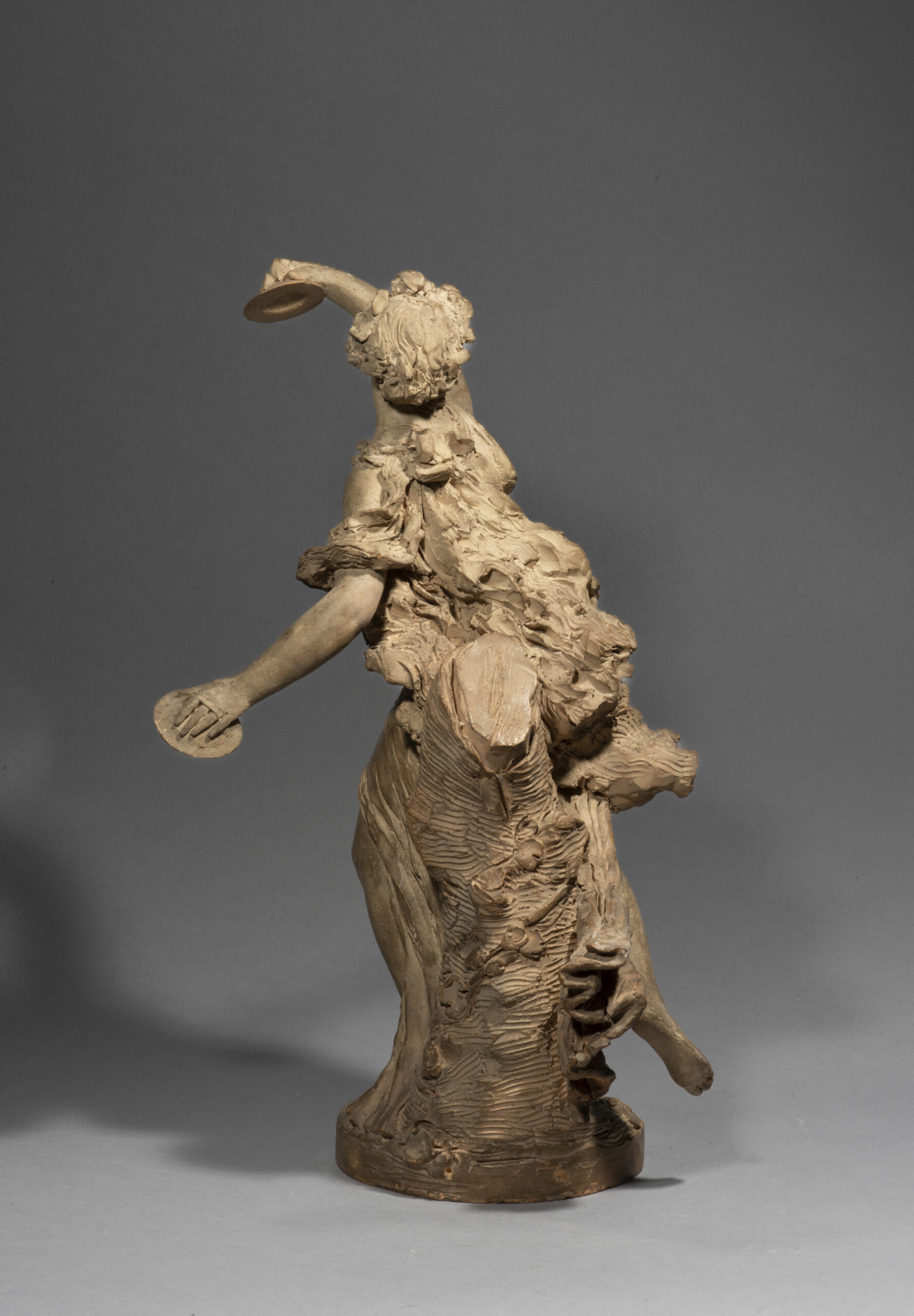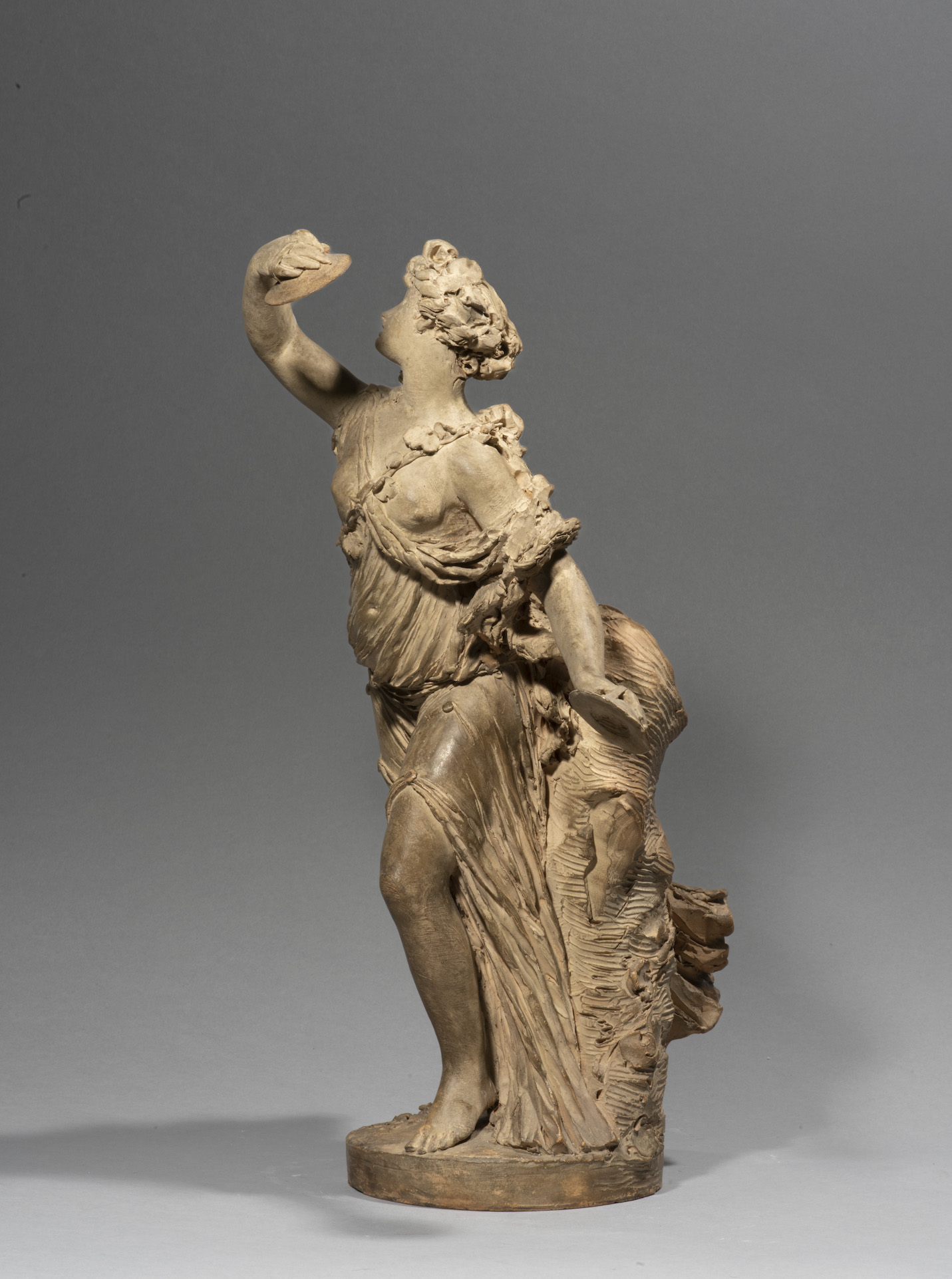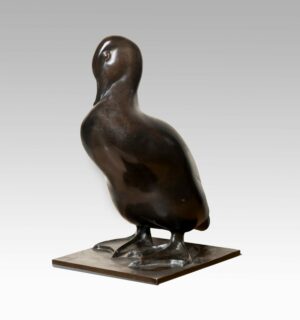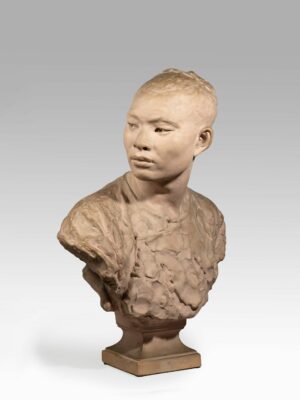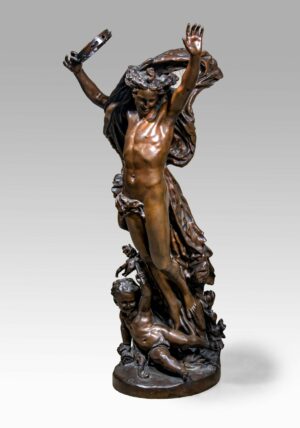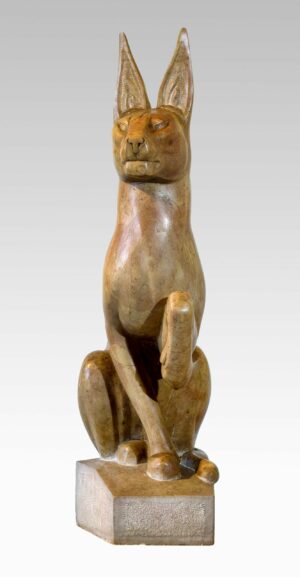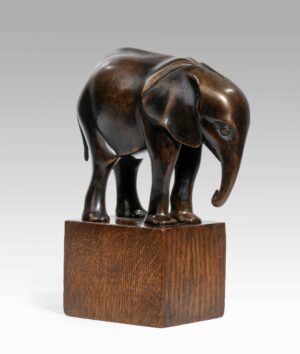Description
Fauns, satyrs and bacchantes mark the history of painting and sculpture, in particular during the Renaissance with Titian and in the 17th century, with François Duquesnoy and Nicolas Poussin. Many of their most accomplished compositions are filled with bacchanalian scenes against a landscape background. This joyful environment, derived from mythology, was reinterpreted in the 18th century in a more amiable manner, to the taste of Madame de Pompadour or Madame du Barry. Marin, who was very much in tune with his time, did not escape this influence and throughout his life produced a large number of small figures, Bacchic subjects, expressive busts, and young women competing with grace and spontaneity.
Our terracotta, with its extraordinary quality and stylistic characteristics, is fully in keeping with this production, dear to the artist. Amply draped, with a semi-nude breast, her hair adorned with wild berries, half covered with an animal’s skin held in place on her shoulder by a lace, the young bacchante propels herself forward to the sound of her cymbals. The gently rounded limbs, the complex character of the drapery, the hip resting on the tree trunk are all characteristic elements of Marin’s style. The same is true of the round face, with its half-open hemmed lips, so frequent in his work. M. Quinquenet (op.cit. supra), in his summary catalogue of Marin’s work, details numerous subjects of bacchantes or bacchanals, sometimes signed and dated, in different positions: lying down, head study, with children, completely naked, carrying a child on the shoulder, … But only one description of this inventory, Bacchante running holding cymbals. Terracotta. Collection baron de Rotschild (sic)” corresponds to our statuette. There is every reason to believe that this is our terracotta, more especially as Marin did not systematically sign his works, as can be seen, for example, with his Young girl with two doves, around 1791 (terracotta, Saint-Jean-Cap-Ferrat, Villa Ephrussi de Rothschild, inv. MS 1827). Our sculpture can be compared with three terracotta artworks by Marin on the same subject: the Bacchante (Height: 34.5 cm) in the Thyssen-Bornemisza collection (Op.-cit. supra, No. 53), Erigone or Bacchante signed “Marin” (Height: 43.5 cm, private collection), the latter holding an urn-shaped vase from the sale of Mrs de Polès (Paris, 17 XI 1936, No. 165, repr. Pl. XXXIX; fig. 140), and also Autumn (H. 39.5 cm) from the collection of Daniel Katz (Op.cit.-supra, No. 51).
But what is striking here is the virtuosity of the drapery holding a magnified animal skin, the realistic aspect of the tree trunk, marked by the strong reliefs and the apparent cracks in the bark, the extraordinary vivacity of the movement… Nicknamed the “Correggio of sculpture”, Marin, once again, both moves and seduces us. His former owner, having lovingly made a custom-made box for his piece of art, was indeed the first to be convinced!

